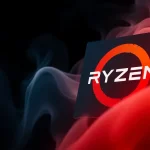VAST adds support for Google Cloud TPUs in managed service

In an era where artificial intelligence is rapidly evolving, the need for efficient and scalable computing resources has never been greater. Companies are seeking solutions that not only support the heavy lifting required by AI models but also streamline operations across hybrid cloud environments. This is where VAST Data and Google Cloud come into play, offering innovative services that enhance AI capabilities through a managed service approach. Let's dive deeper into how this collaboration is reshaping AI workflows and what it means for enterprises.
- Understanding VAST AI OS and its Functionality
- The Significance of Global Namespace in AI Operations
- How VAST and Google Cloud Enhance AI Workloads
- Exploring the Managed Service Model
- Technical Innovations Behind VAST Support for GCP
- Competitive Landscape in AI Data Management
- Envisioning the Future of AI Infrastructure
Understanding VAST AI OS and its Functionality
VAST’s AI OS represents a comprehensive software ecosystem designed to facilitate seamless operations across diverse computing environments. This unified platform integrates various components, including:
- DataCatalog: A system for organizing and managing data assets.
- DataBase: Serves as a universal namespace for easy access to data.
- DataSpace: A virtual space that connects data across locations.
- DataEngine: Manages data processing and analytics.
- InsightEngine: Provides insights and analytics on data usage.
- AgentEngine: Facilitates agentic interactions for AI models.
This operating system layer leverages Google’s Tensor Processing Units (TPUs), which are specialized hardware designed to optimize AI training and inference workloads. By combining these technologies, VAST enables enterprise-level customers to connect their on-premises and cloud-based clusters, simplifying data management and accessibility.
The Significance of Global Namespace in AI Operations
One of the standout features of VAST’s AI OS is its global namespace capability, which allows organizations to operate across hybrid environments without the complexities typically associated with data migrations. This means that organizations can:
- Access data from both on-premises and cloud locations without duplication.
- Run AI models on different hardware environments, such as TPUs in the U.S. and GPUs in Japan.
- Ensure data consistency and compliance through unified governance.
This integration is particularly beneficial for enterprises looking to utilize AI while maintaining control over their data assets. For instance, VAST successfully connected TPU and GPU processing clusters over 10,000 kilometers apart, allowing for seamless, near real-time data access during AI inference workloads.
How VAST and Google Cloud Enhance AI Workloads
Through their partnership, VAST and Google Cloud have developed a robust infrastructure that significantly improves the efficiency of AI workloads. For instance, VAST’s AI OS, when tested with Meta’s Llama-3.1-8B-Instruct model, demonstrated:
- Model load speeds comparable to local NVMe disks.
- Consistent performance during cold starts, ensuring predictable behavior.
- Improved data load times, minimizing delays during processing.
This level of performance is crucial for enterprises that rely on real-time data processing and need to maintain high availability for their applications.
Exploring the Managed Service Model
The managed service offered by VAST allows customers to deploy a fully managed AI OS easily. Through the Google Cloud Marketplace, organizations can:
- Auto-deploy a VAST-managed cluster in a matter of minutes.
- Benefit from integrated governance and billing mechanisms.
- Scale operations elastically without the burden of manual management.
This approach not only enhances operational efficiency but also accelerates the time to market for AI-driven solutions.
Technical Innovations Behind VAST Support for GCP
To further optimize its service, VAST has integrated technologies from its acquired Red Stapler business. This acquisition has allowed VAST to utilize validated NFS paths for data transfer, ensuring optimized model loading and efficient handling of small files and metadata. Furthermore, VAST’s architecture enables:
- Efficient data feeding to TPU virtual machines.
- Streamlined operations across different data environments without extensive migration planning.
- Consistent application of access controls and compliance policies across the board.
As organizations grow and their data needs evolve, VAST’s architecture positions them to adapt quickly while maintaining operational integrity.
Competitive Landscape in AI Data Management
VAST is not alone in the market; competitors like Hammerspace and Arcitecta are also advancing in intelligent data streaming for AI applications. Each has unique offerings, with:
- Hammerspace: Focuses on Global Data Environment capabilities.
- Arcitecta: Provides real-time data streaming solutions for media and AI workloads.
Despite the competition, VAST holds a distinct advantage with its dedicated support for Google TPUs and managed services, allowing for more fluid operations in hybrid environments.
Envisioning the Future of AI Infrastructure
Looking ahead, VAST aims to expand its managed AI OS services across other cloud platforms like AWS and Azure, creating a trifecta of support for enterprise customers. This will allow organizations to operate hybrid AI environments seamlessly across multiple cloud providers. The potential for collaboration with other cloud services, such as CoreWeave, further underlines the flexibility of VAST's solutions.
As AI continues to evolve, the demand for efficient, scalable, and integrated data management solutions will only increase. Companies that can leverage these capabilities will likely maintain a competitive edge in the market.
For those interested in learning more about Google Cloud’s infrastructure capabilities for AI, consider watching this insightful video:
In summary, VAST Data's collaboration with Google Cloud represents a significant advancement in AI infrastructure, offering a comprehensive managed service that empowers organizations to harness the full potential of their data, irrespective of where it resides.




Leave a Reply